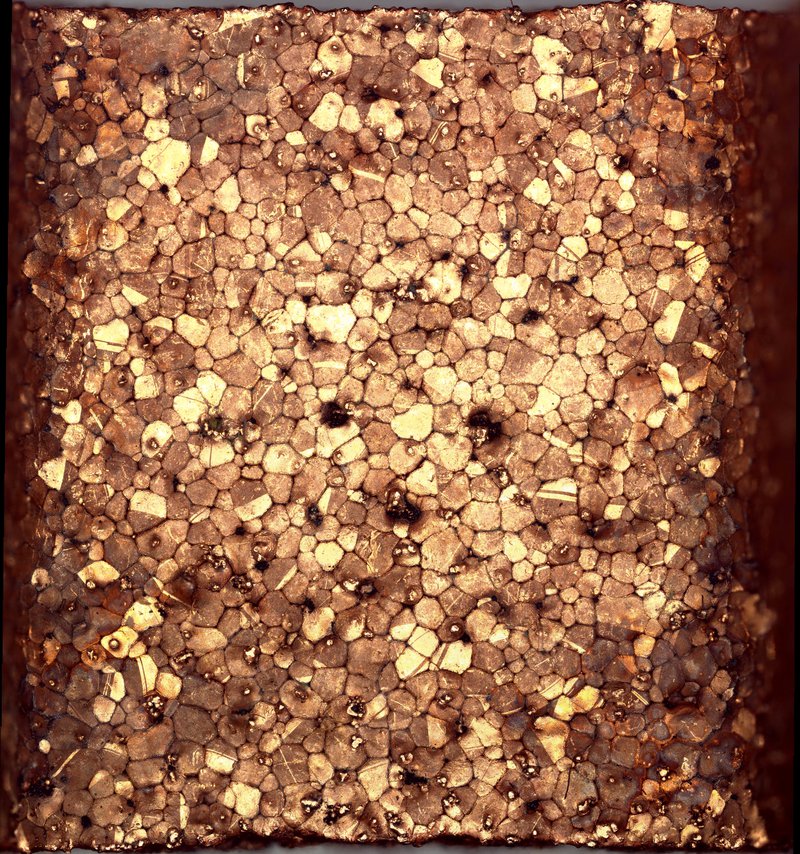 I wasn't going to this time, I swear!
I wasn't going to this time, I swear!
 @polyfractal greeting from scotland. I recently salvaged a biorad radiance 2100 confocal, currently trying to source a solid state laser to replace the argon ion laser, any recommendations for a 488nm module supplier?
@polyfractal greeting from scotland. I recently salvaged a biorad radiance 2100 confocal, currently trying to source a solid state laser to replace the argon ion laser, any recommendations for a 488nm module supplier?
 with "only" 60,000 views and 200 comments, one of whom is applied science guy? :)
with "only" 60,000 views and 200 comments, one of whom is applied science guy? :)

And yeah it gained a bunch of traction in the last few months thanks to the big influx of traffic, but it was a "dud" for a very long time which can be demoralizing if you let it get to you :)

 I'll add that one to my watch later then, and it answers my question as to whether you'll turn your attention to metal printing.
I'll add that one to my watch later then, and it answers my question as to whether you'll turn your attention to metal printing.

 If you're actually trying to repair/use the laser Sam's laserfaq is a great source: https://www.repairfaq.org/sam/lasersam.htm
If you're actually trying to repair/use the laser Sam's laserfaq is a great source: https://www.repairfaq.org/sam/lasersam.htm

 cool, thanks @polyfractal i found a good supplier based in poland “lambdawave” they have many flavours of lasers, arduino controllable and low prices. Hope to connect with you in future! Patrick
cool, thanks @polyfractal i found a good supplier based in poland “lambdawave” they have many flavours of lasers, arduino controllable and low prices. Hope to connect with you in future! Patrick

![]() What resin? I did some research on a now likely dead project with printing resins...
What resin? I did some research on a now likely dead project with printing resins...
 @polyfractal please keep us updated on that. I've been working on bound metal printing with filament for the past few months and there's a huge amount of potential, but I'm especially excited about the idea of working with powders mixed with resin because you might be able to mix your own alloys and also get huge details. One company described SLA-metal powder as "like butter" being spread on the plate which presents its own challenges of course.
@polyfractal please keep us updated on that. I've been working on bound metal printing with filament for the past few months and there's a huge amount of potential, but I'm especially excited about the idea of working with powders mixed with resin because you might be able to mix your own alloys and also get huge details. One company described SLA-metal powder as "like butter" being spread on the plate which presents its own challenges of course.
 @polyfractal You should definitely check out the Virtual Foundry/Bradley woods, he got started with electroforming 3D printing exactly as you're describing before he started manufacturing metal filaments.
@polyfractal You should definitely check out the Virtual Foundry/Bradley woods, he got started with electroforming 3D printing exactly as you're describing before he started manufacturing metal filaments.

 There is also some talk in the community about debinding ceramics and other materials and then infiltrating them with metal for composites with no shrink.
There is also some talk in the community about debinding ceramics and other materials and then infiltrating them with metal for composites with no shrink.

![]() I tried some localized thermal laser decomposition of copper oxide in epoxy. it indeed created copper.
I tried some localized thermal laser decomposition of copper oxide in epoxy. it indeed created copper.
![]() metal matrix composites???
metal matrix composites???
![]() thought: MMC done by electroforming on carbon fiber.
thought: MMC done by electroforming on carbon fiber.
 @polyfractal ++
@polyfractal ++
![]() @polyfractal microgravity should also avoid separation
@polyfractal microgravity should also avoid separation


 The results would also look super cool to scan with your laser doohickey. This is using a conventional USB microscope to scan
The results would also look super cool to scan with your laser doohickey. This is using a conventional USB microscope to scan

 But he might not be "allowed" back...
But he might not be "allowed" back...
 One-way trip?
One-way trip?
![]() going to experiment with ar0230 sensor on a raspi. very high sensitivity 2-megapixel camera, datasheet promises a 16-bit raw. may be handy for the spectrum acquisition from the microscope.
going to experiment with ar0230 sensor on a raspi. very high sensitivity 2-megapixel camera, datasheet promises a 16-bit raw. may be handy for the spectrum acquisition from the microscope.

![]() Myself. It was a fairly coarse copper oxide so the result sucked. Handheld 5-watt 450nm blue.
Myself. It was a fairly coarse copper oxide so the result sucked. Handheld 5-watt 450nm blue.
![]() CW.
CW.

![]() Should try acrylate. Burnt epoxy STINKS. The amines, likely...
Should try acrylate. Burnt epoxy STINKS. The amines, likely...

 Bezos Blue Origin microgravity will only last ~ 3 minutes, I think Elon can do much better.
Bezos Blue Origin microgravity will only last ~ 3 minutes, I think Elon can do much better.
![]() Tried if copper on circuitboard could be etched away with nascent iodine from laser decomposition with CO2 laser of iodoform. The board didn't even notice and I stank like an old hospital for next two days.
Tried if copper on circuitboard could be etched away with nascent iodine from laser decomposition with CO2 laser of iodoform. The board didn't even notice and I stank like an old hospital for next two days.


 For my goals the problem is avoiding copper oxidation, not causing it... I mean, once you selectively oxidize it, how do you avoid it happening to the rest?
For my goals the problem is avoiding copper oxidation, not causing it... I mean, once you selectively oxidize it, how do you avoid it happening to the rest?
![]() Todo, same rig, laser soldering. If the beam can melt solder paste with high enough precision.
Todo, same rig, laser soldering. If the beam can melt solder paste with high enough precision.
![]() Cheapo K40-III. Replace electronics with arduino/Marlin for easy support of gcode, the original software SUCKS.
Cheapo K40-III. Replace electronics with arduino/Marlin for easy support of gcode, the original software SUCKS.
![]() Enough to earn the machine the nickname "Blue Horror".
Enough to earn the machine the nickname "Blue Horror".
 So it's 1:00 here, which means we've been at it for an hour now. If Zach needs to get back to work, we'll have to let him go with our thanks. I really enjoyed this chat today, learned a lot. Feel free to stick around and continue the chat, of course -- the channel is always open. Thanks Zach!
So it's 1:00 here, which means we've been at it for an hour now. If Zach needs to get back to work, we'll have to let him go with our thanks. I really enjoyed this chat today, learned a lot. Feel free to stick around and continue the chat, of course -- the channel is always open. Thanks Zach!
 And thanks to everyone for the great questions, too. Transcript to follow shortly.
And thanks to everyone for the great questions, too. Transcript to follow shortly.

 Got it. And thank you Zach!
Got it. And thank you Zach!

![]() Thanks Zack. Great chat, learned plenty.
Thanks Zack. Great chat, learned plenty.
 Dan Maloney
Dan Maloney
Discussions
Become a Hackaday.io Member
Create an account to leave a comment. Already have an account? Log In.